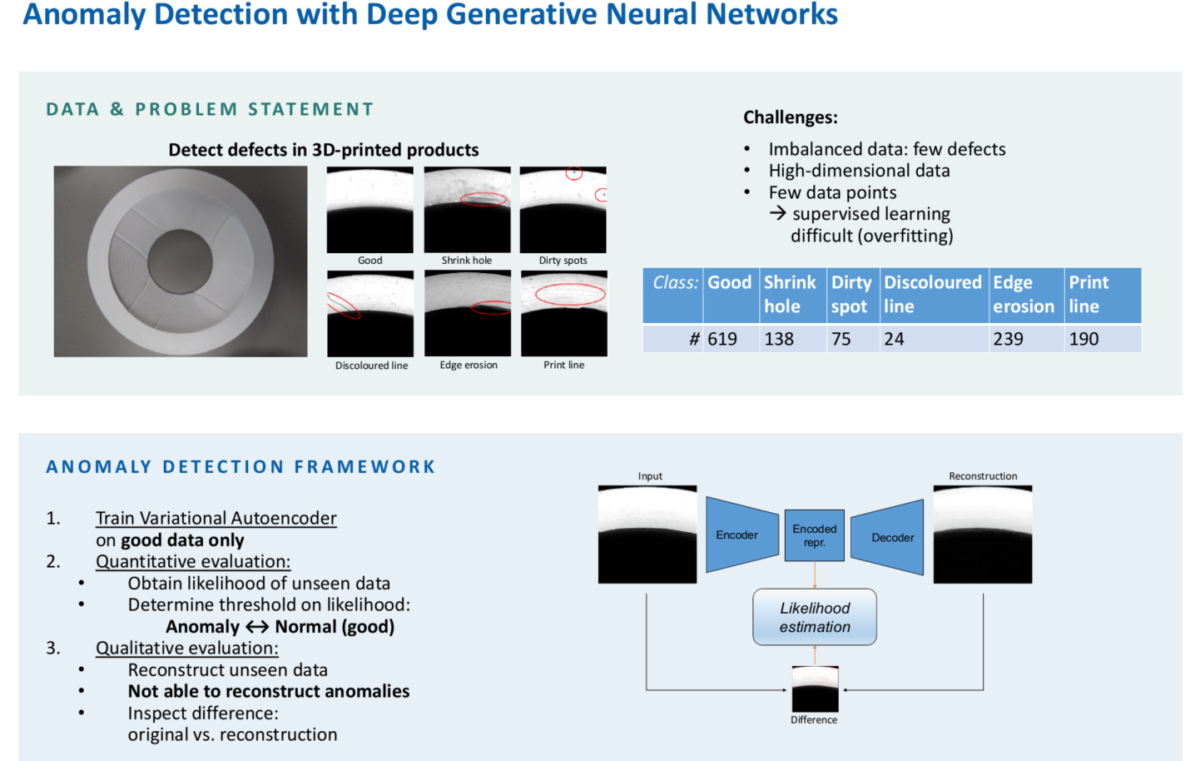
Anomaly Detection Framework
Aiming at a robust and secure communication environment, the activities in work package (WP)2 focused on setting up a distributed data analytics service to handle big data in real-time. The environment for the Digital Industry should be handled via control networks or monitoring networks.
This is where TU/e, the Dutch Technical University of Eindhoven and Signify, former Philips Lighting, came up with one of the big achievements in Productive4.0. They have cooperated on a use case from Signify involving automated visual quality control for 3D printers. The goal was to detect surface defects on 3D-printes products, by collecting images of these products with a simple and cost efficient setup for automated visual inspection. An additional goal was to detect failures inside the 3D printer from footage taken within the printer. Methods based on deep generative models (neural networks) have been developed to automate these tasks.
Deep learning solutions
As a first method, images of 3D printed products were collected using a flatbed scanner. They were then cut up into smaller image slices, which were pre-processed with e.g. gamma correction. Typical defects were identified manually, to obtain a suitable data set for machine learning algorithms.
Loek Tonnaer from TU/e explains the approach: “The data collected provides opportunities for machine learning solutions, in particular deep learning solutions. It however presents certain challenges as well. Data is typically imbalanced, in the sense that defects are much rarer than non-faulty images. Manual data labelling is costly and inefficient, but sufficient examples are needed for good outcomes”.
Deep generative models
The proposed solutions are based on generative modelling; rather than the more classical approach of classifying defects and non-defects (i.e. binary classification), the approach instead to learn a good characterisation of what constitutes normal, non-faulty data, of which much more examples are available. Divergences from this then indicate defects.
Deep generative models, based on the principle of “Variational Autoencoders”, have been used to learn to represent non-faulty products. Such representation can then be used to identify defective products as anomalies.
Strengths and limitations
Results have shown that it is possible to create a setup for automated visual control of 3D-printed products, part of which has been implemented and tested in the production factory. The methods go beyond the more standard machine learning paradigm of supervised fault classification, focusing on unsupervised and semi-supervised generative modelling instead, addressing a number of challenges that arise in this product setting.
The success of this method relies on the capability of the generative model to represent non-anomalous data, but its inability to generalise beyond this to data considered faulty or anomalous. To achieve this, a sufficiently complete dataset of non-faulty products is needed.


